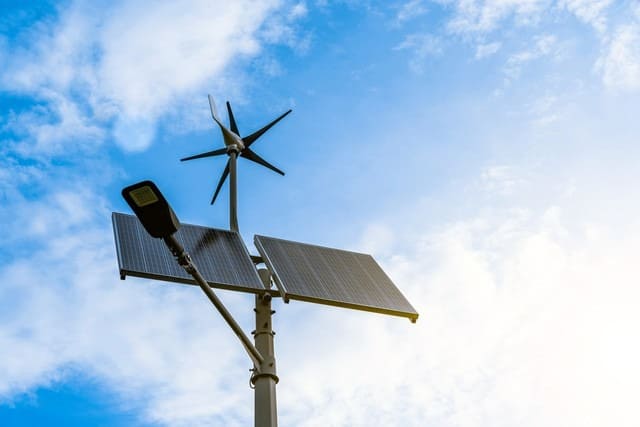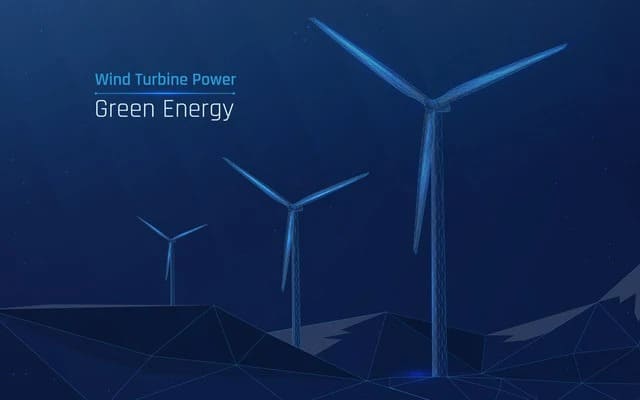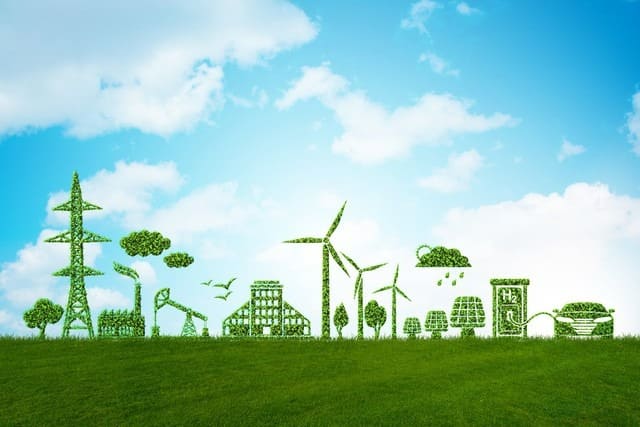Wind turbines consist of two primary components that perform distinct functions:
Wind Turbine Part: This component converts wind energy into mechanical energy.
Generator Section: This part converts mechanical energy into electrical energy.
Wind turbines can be classified into various categories based on the types of structures and technical programs utilized in these two major parts, as well as their combinations. Let’s explore some of the key classifications:

I. Classification Based on Rotating Main Axis Direction:
Horizontal Axis Wind Turbine: The rotation axis is parallel to the ground, requiring the adjustment of the turbine’s position as the wind direction changes.
Vertical Axis Wind Turbine: The rotation axis is perpendicular to the ground, offering a simpler design that eliminates the need for the rotor to adjust its direction with changing wind directions.
II. Classification Based on Power Regulation Mechanism:
Fixed Pitch (Stall Type) Units: The connection between the blades and the hub remains fixed. The blade angle to the wind cannot change as wind speed fluctuates. Fixed pitch units have been dominant in wind energy development and utilization for the past two decades due to their simple structure and reliable performance.
Variable Pitch Units: The blades can rotate around the blade center axis, enabling adjustment of the blade angle of attack within a certain range (generally 0-90 degrees). Variable pitch units offer improved performance compared to fixed pitch types, but their structures tend to be more complex. They are predominantly used in large-scale installations.
III. Classification Based on Impeller Speed:
Constant Speed Wind Turbine: These turbines feature a simple and reliable design, low cost, and low maintenance requirements. They are directly connected to the grid. However, they have lower aerodynamic efficiency, higher structural loads, and can cause fluctuations and reactive power absorption from the grid.
Variable Speed Wind Turbines: These turbines exhibit high aerodynamic efficiency, low mechanical stress, low power fluctuations, high cost efficiency, and lighter support structures. However, they are more sensitive to voltage drops, require expensive electrical equipment, and have higher maintenance costs. Variable speed turbines are commonly used in large-capacity grid-connected models.
IV. Classification Based on Generator Type:
Wind turbines can be divided into two main categories based on generator type:
Asynchronous Generator Type:
a. Cage-Type Asynchronous Generator: These generators feature a cage-type rotor and are widely used in small and medium-sized units due to their simple and reliable structure, affordability, and easy grid connection.
b. Wire-Wound Doubly-Fed Asynchronous Generator: These generators have a wire-wound rotor. The stator is directly connected to the grid for power delivery, while the wire-wound rotor is controlled by a frequency converter to deliver active or reactive power to the grid.
Synchronous Generator Type:
a. Electrically-Excited Synchronous Generator: These generators have wire-wound convex pole-type magnetic poles in the rotor, which are excited by an external DC current to generate a magnetic field.
b. Permanent Magnet Synchronous Generator: These generators have rotor poles made of ferrite material, typically operating at low speeds with multiple poles. They do not require external excitation, which simplifies the generator structure and offers various advantages.

V. Classification Based on Rated Power:
Wind turbines can be categorized based on their rated power as follows:
Micro Machines: Up to 10 kW
Small Machines: 10 kW to 100 kW
Medium-Sized Machines: 100 kW to 1000 kW
Large Machines: Above 1000 kW (MW-Class Turbines)
In conclusion, wind turbines have diverse classifications based on factors such as axis direction, power regulation mechanism, impeller speed, generator type, and rated power. These classifications enable the selection of appropriate turbines based on specific requirements and applications.
Learn More:Assessment of wind characteristics and wind turbine characteristics in Taiwan – ScienceDirect

